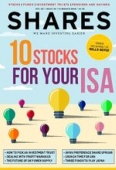Archived article
Please note that tax, investment, pension and ISA rules can change and the information and any views contained in this article may now be inaccurate.
How to pick an Innovative Finance ISA

The past year has seen the launch of an array of Innovative Finance ISAs (IFISAs) that enable people to invest in peer-to-peer (P2P) loans in a tax-efficient way.
There are almost 40 IFISAs currently available and they vary significantly in the returns offered, types of borrowers you’re lending to and level of diversification provided.
There are four main features to look out for when deciding which IFISA best suits your needs.
1. The rate of return
There is a huge gap between the lowest and highest rates advertised by P2P lenders, from less than 4% to as much as 15%.
It’s tempting to opt for the product with the highest rate, but bear in mind that higher rates usually mean higher risk.
Landbay, for example, is currently advertising an expected return of 3.54% on its fixed rate IFISA. It’s lower risk than other IFISAs because investments are secured against buy-to-let British property. Your money is diversified across several mortgages.
In contrast, Ablrate is advertising rates of between 10% and 15%. Instead of automatically spreading your money across loans, you choose which business borrower to lend to. Examples include a modular building company, an air freight business and a company that is acquiring shares in fishing boats.
2. The type of lending
There are three main types of loans you can invest in: consumer, business and property.
Experts suggest diversifying your money across different loan types, although this is difficult with IFISAs because you’re only allowed to open one IFISA in each tax year.
Andrew Lawson, chief product officer at Zopa, which provides unsecured consumer loans, claims lending to consumers is a pretty stable investment.
‘We were lending during the financial crisis and investors were still getting returns,’ he says.
‘We provide average loans of £8,000 which means we can diversify investors’ money across a large number of borrowers. If you invest in a P2P lender offering £2m commercial property loans you won’t get the same level of diversification.’
Zopa is currently advertising target returns of 4% for ISA Core and 4.6% for ISA Plus, which is slightly higher risk.
The advantage of property loans is they are, by their nature, secured on property. However, the level of risk within property lending can vary significantly.
‘Development finance lending is very different to residential mortgages,’ says John Goodall, chief executive of Landbay.
‘Buy-to-let lending is relatively low risk compared with other types of property lending – even during 2007 to 2009 the levels of arrears and losses in the market were very low.’
Business loans can be either secured or unsecured. Stuart Law, chief executive of Assetz Capital, a business P2P lender, claims its IFISA is relatively low risk despite offering returns of up to 15%.
‘Our rates our high because the banks are too cautious to lend to the borrowers we accept. There is far less rate competition than in the consumer lending market,’ says Law. ‘We’re lending to businesses with a slightly higher risk of default – possibly because they made a loss last year – but all our loans are secured with an average loan-to-value of 60%.’
Some platforms offer a mixture of loans. RateSetter, for example, provides consumer, business and property loans and automatically spreads your money across them. Rates average between 3% and 6% a year.
3. Automated or manual lending
Platforms like Zopa and RateSetter offer automated lending – you pay in money and it is automatically spread across a range of loans. Others let you choose which borrowers you lend to.
Typically, people who choose loans should be fairly experienced investors who have enough time on their hands to research the borrower and understand the loan terms.
Nick Faulkner, founder of P2P comparison site 4th Way, says: ‘If you go for automated options, you need to work to understand the risks at the P2P lending site, as well as understand how much diversification you can expect.
‘If you want to select loans yourself, you need to understand all the above, plus what makes a good individual loan. Please don’t make the mistake that lots of investors make, which is to think that because they’re choosing loans themselves, they can concentrate their money on a small number of them. That is not how good, safe lending works.’
4. The platform’s track record
Most experts recommend choosing a platform that has been around for a few years so you can assess its track record.
P2P platforms are fairly transparent about their level of defaults, lending performance and credit criteria, especially if they’re a member of the Peer-to-Peer Finance Association.
For consumer loans, it’s preferable that borrowers have a good credit score, are over 21, have few outstanding debts and are earning over a sensible minimum.
For buy-to-let mortgage lending, check whether the platform focuses on experienced landlords, with a maximum loan-to-value of around 75%, and average rent of more than 1.5 times the monthly mortgage payments.
It’s also a good idea to assess the platform’s level of experience.
‘For unsecured personal and business loans you want to see they have credit risk experts as well as experienced underwriters, specifically in the types of loan the platform
offers,’ says Faulkner.
‘For property and secured business loans you want to see a lot of experience in loan origination and preferably experience in chasing and collecting bad debts too.’ (EP)
Important information:
These articles are provided by Shares magazine which is published by AJ Bell Media, a part of AJ Bell. Shares is not written by AJ Bell.
Shares is provided for your general information and use and is not a personal recommendation to invest. It is not intended to be relied upon by you in making or not making any investment decisions. The investments referred to in these articles will not be suitable for all investors. If in doubt please seek appropriate independent financial advice.
Investors acting on the information in these articles do so at their own risk and AJ Bell Media and its staff do not accept liability for losses suffered by investors as a result of their investment decisions.
Issue contents
Big News
- AJ Bell customers given priority access to company’s IPO share offer
- An increasing number of investment trust dividend heroes
- Spring Statement reveals (slightly) improved economic picture
- Gem Diamonds is on a roll with high quality discoveries
- Time is running out for GKN shareholders to vote on Melrose takeover offer
- Labour strike risk could lead to higher copper price
- Why is the dollar struggling?
- Big fall in London house prices
- Aviva under fire for plan to cancel high-yielding shares

 magazine
magazine








